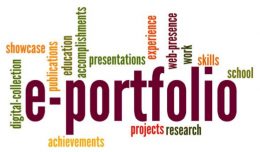Who owns the e-portfolio?
As I read over this week’s readings that talked
about who really owns the e-portfolio I found myself starting to understand the
true power of an e-portfolio. There was one quote in a reading that hit home to
me, “The things we are supposed to do for it [the e-portfolio] are kind of like
assignments and no offense but everybody knows, for assignments, you give them
what they want – you give them what they want and they give you your mark,
that’s basically the way it works.” (Tosh, Penny Light, Flemming & Haywood,
2005). I started to think that is one problem
in education, we set rubrics or guidelines for student’s to hit for a certain
grade. Instead we don’t truly give them full ownership of the material and
allow them to use their creativity to go for it.
One reason I like the COVA model is not only does it
allow us a voice in our creation that is authentic to our own learning
environment, but it allows the learner to take more of an ownership to their
learning. Student’s will take more ownership in their learning and grow when we
allow them voice in their creation without obstacles. This goes back to the
question, why do we always set guidelines and grading rubrics along with telling
students how to do things. We should be allowing them to decide how to reach
the end without telling them. Allow them to be creative and decide how to reach
the end.
I just finished a project that I gave my student’s
in my science class and tried to use this approach. They were given the task of
creating a video. The only guidelines were on length, it had to be attached to
the Google classroom assignment, and it had to be a science topic. I allowed
them to decide the platform, topic, and the content that was in their video
along with how to put it together. The interesting observation I noticed at
first was student’s looking lost and in a sense of panic. They were always
given a guideline on how an assignment should be done, but this time I left it
open for them to figure out with very few perimeters. I did include a video
that I had made with powtoons. I have always felt that I should not ask my
student’s to do something that I am not willing to do myself. There was a quote
in this week’s readings that talked about what I have always felt, “Educators
need to realize that if we expect to maintain any level of credibility and
respect with our students we can only ask our students to do things we are
willing to do ourselves. John Hattie points to feedback within a trusted
relationship between and teacher and a student as one of the important factors
in student achievement.” (Hattie, J. , 2013). I showed student’s the video that
I had created along with letting them know that this was the first time I had created
a video using powtoons. This helped students figure out that if I was willing
to try something new and live outside my comfort zone then how come they couldn’t.
The project was a huge success. I had
student’s that stepped out of their comfort zone and I learned one important
thing. Allow our students a choice and more ownership of their learning. I
challenge them, gave them a model, and they rose to the occasion by producing
some great video’s that demonstrated their creativity, passion, and growth as
learners. None of them gave up and they all met the challenge.
The final thing that hit home from this week’s
readings that I can now answer more after reflecting on my classroom project,
the readings, and experiences from the DLL courses is everyone is an owner of
an e-portfolio. Sure I am creating my own e-portfolio, but they are works and
reflections that everyone can take ownership of and learn from. Just like we
all were able to learn from each student’s video. In today’s digital world the
unique thing that makes learning today different from when I was in grade
school is we are all connected through the web. No matter who created the work,
we can all benefit and take ownership of the work because it is enhancing
everyone’s learning.
References
Hattie, J., & Yates, G. C. (2013). Visible
learning and the science of how we learn. Routledge.
Thibodeaux, T. (2018). Digital Learning: Choice,
ownership, and voice through authentic learning opportunities. Retrieved from: http://tilisathibodeaux.com/wordpress/?page_id=1539
Tosh, D., Light, T. P., Fleming, K., & Haywood,
J. (2005). Engagement with electronic portfolios: Challenges from the student
perspective. Canadian Journal of Learning and Technology/La revue canadienne de
l’apprentissage et de la technologie, 31(3).




Comments
Post a Comment